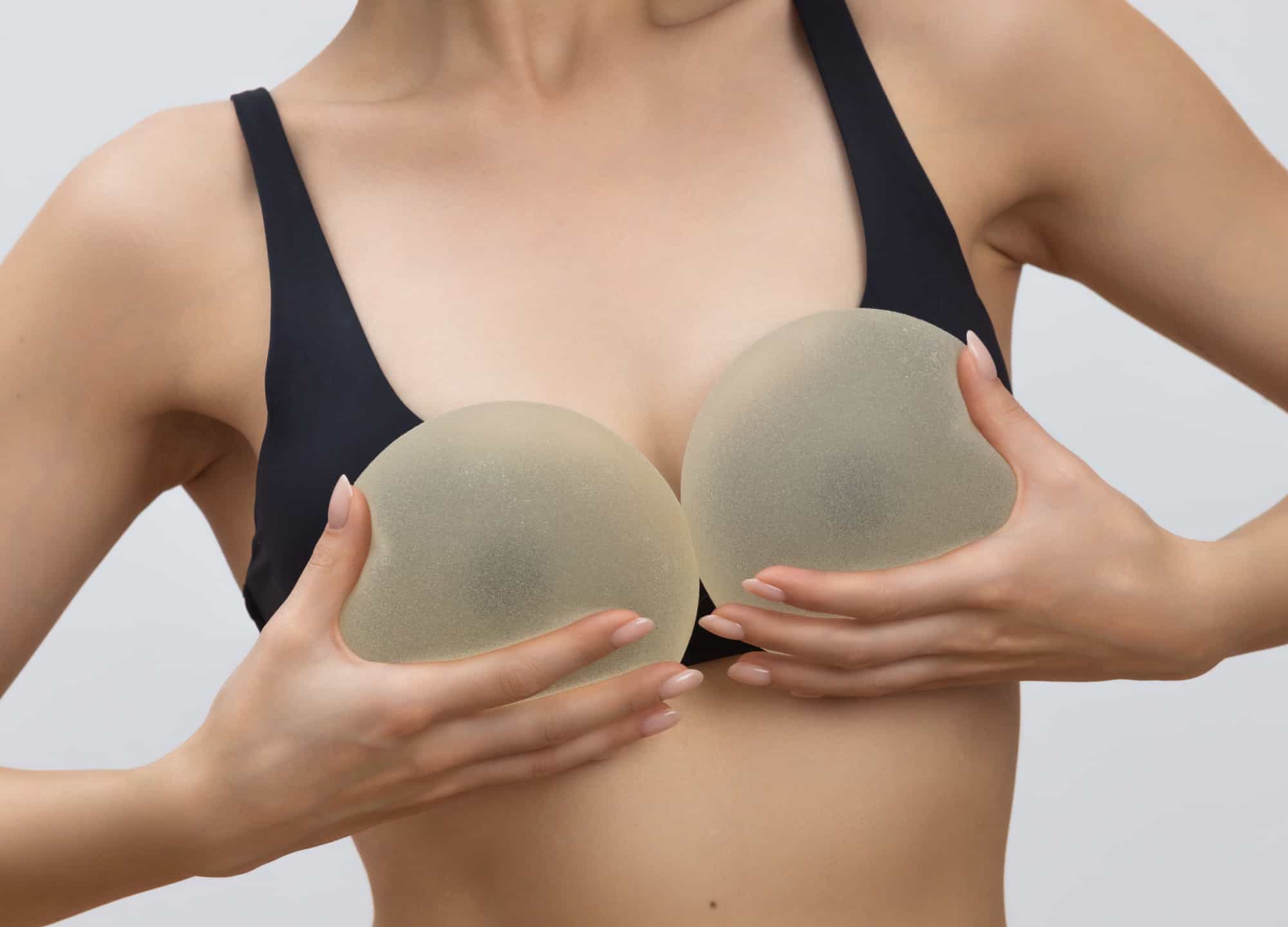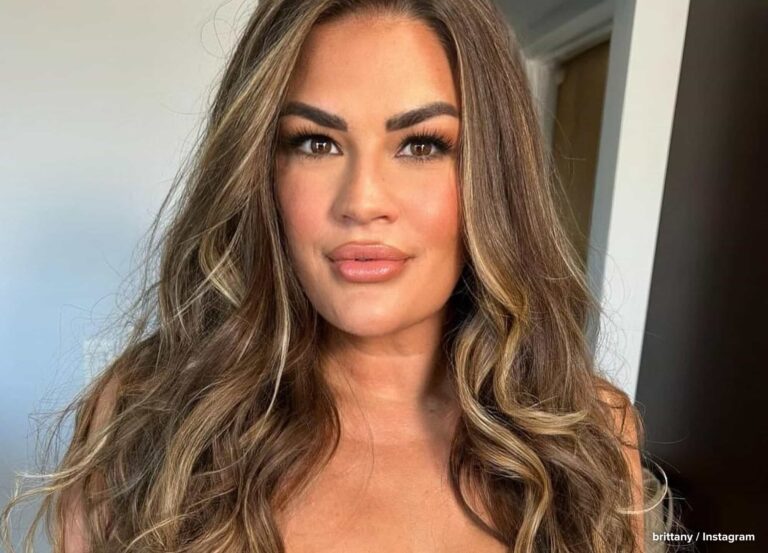Featured Experts
Dr. Edwin Kwon, a board-certified plastic surgeon in Beverly Hills, California
Dr. Evan Garfein, a board-certified plastic surgeon, chief of plastic and reconstructive surgery at Montefiore Einstein Advanced Care in New York City, and co-founder of Greenwich Street 497
Dr. Lyle Leipziger, a board-certified plastic surgeon and chief of plastic and reconstructive Surgery at North Shore University Hospital and Long Island Jewish Medical Center in New York
If you’re considering your first breast augmentation or a revision or are researching your breast reconstruction options, there is one major aspect of the procedure that you might not be considering: the implant brand. For many people, the most important factors when getting breast implants are that they look good, feel good, and are safe. But today’s consumers are more informed than ever—and if you’ve gone down the rabbit hole in your quest to learn more about implants, we can’t blame you if you’ve come out of it more confused than ever.
In the United States, there are three different brands producing FDA-cleared breast implants: Mentor; Sientra; and Allergan, which makes Natrelle. Within those brands, you will find hundreds of different implants across size (both the volume and width of the implant), projection, and gel cohesivity (more on this shortly). Then there’s saline and silicone.
Though the sheer volume of options is dizzying, there is no one “best” implant brand. “There isn’t really much difference between the three companies in terms of the quality,” says Beverly Hills, California–based board-certified plastic surgeon Dr. Edwin Kwon. “I don’t have any reservations about putting in an Allergan, a Sientra, or a Mentor implant, because I think they’re all very, very good.” Adds New York City board-certified plastic surgeon Dr. Evan Garfein, “I’m 100% positive that surgeons and patients would be unable to tell what brand implant someone has. If surgeons were blindfolded, they’d be hard-pressed to tell—even in the operating room.”
While you absolutely should voice your opinions to your provider, ask questions, and share concerns, selecting an implant is very much an acquired skill. “My feeling is, the patient doesn’t necessarily have all the information to decide on the proper breast implant for themselves,” says board-certified plastic surgeon Dr. Lyle Leipziger. “Yes, there are three major companies, but it’s hard for a patient to say which brand they want, because of all of the little nuances that go into selecting an implant.”
You can review individual implant attributes like size and projection in a vacuum, but it’s a provider’s trained eye that will be able to determine which exact product is best for your unique case. If you’re still someone who wants to know everything about a potential procedure, we’ve outlined some of the aspects that could perhaps play a role in implant brand selection. Keep in mind that the surgeons interviewed for this article use all of the FDA-cleared implant brands—and aren’t paid by any of them.
Silicone vs. saline
There’s a distinct difference between these two implant types, but the primary reason to choose saline would be age. “You need to be 22 to have a silicone gel implant,” says Dr. Leipziger. “I’ve had patients under 22 that have said, ‘I’m not waiting,’ but in general, saline can feel a bit more ripply, like a water balloon.” In rare cases, he will have a patient who is silicone-phobic who wants implants. If he thinks they are a proper candidate, he’ll review the pros and cons with them ahead of surgery.
Dr. Garfein notes that he can’t actually remember the last time he put in a saline implant. “Unless you have a lot of breast tissue and you’re really not going to see or feel this implant and you just want an augmentation of a fairly large breast already, I think saline is just a bad bargain.” Sientra does not offer saline implants. Allergan has offered saline implants in the past but does not currently promote them on either the brand’s patient- or provider-facing websites, making it clear that silicone is the focus. Mentor has one saline implant style on offer in the U.S. and offers a variety of options abroad, including one that’s refillable.
Textured implants
While most implants used by providers feature a smooth shell, there are implants that feature “microtextured” surfaces. This is more prevalent among anatomically correct teardrop implants, which are more commonly used in reconstruction cases—the texture helps give the implant stability, preventing it from rotating in the pocket. You may remember the recall of Allergan’s BioCell textured implants back in 2019; they were pulled from the market due to their texture. “There were studies that show that textured implants could contribute to BIA-ALCL [breast implant–associated anaplastic large-cell lymphoma],” says Dr. Leipziger.
Both Mentor and Sientra still offer textured implants that have “microtextured” surfaces. BioCell implants in particular had a much more aggressively textured surface than microtextured implants and were associated with a disproportionately high rate of BIA-ALCL cases. If you already have textured implants, it’s worth noting that unless you have developed BIA-ALCL, the FDA does not recommend removing them but rather being aware of any potential symptoms of the disease—a statement that is supported by the American Society of Plastic Surgeons. However, those who are concerned and would like to remove or replace their implants (for any reason) are encouraged to speak to their plastic surgeons.
Size
Despite there being hundreds of different implants, it’s actually an illusion of choice, says Dr. Garfein. “The father of modern breast augmentation, Dr. John Tebbetts, was the first guy to popularize the notion that there really aren’t that many different implants that will fit a given patient’s chest and breast dimensions,” he explains. This is the “High Five Process,” which distills the five most critical decisions in performing a breast augmentation into just five measurements, for an overall assessment that takes five minutes. “Women used to come in with a picture and say, ‘I want to look like this,’ or say, ‘I want to fit into this-size bra,’ but virtually no surgeons operate like that anymore,” says Dr. Garfein.
Instead, the High Five Process helps both patient and provider narrow down the best implant based on the base width of their existing breast, the amount of breast tissue that can cover the implant, implant volume, where the nipple should be, and the placement of the incision. There will always be outliers—for example, patients who want exaggeratedly large breasts that don’t aesthetically suit their bodies—but the High Five Process allows for a strategic operation that results in a satisfying result, “an attractive breast that’s as full as we can make it,” Dr. Garfein says. “You’re pretty tightly married to the dimensions that you start with.”
Traditional silicone vs. “gummy bear”
If you have a saline implant and it ruptures, you’ll know. The body absorbs the fluid, causing a “deflated” appearance. But with a silicone implant, it’s not always quite so obvious—and then you have the concern of free silicone in your body. Silicone implants used to contain fairly fluid silicone gel that, in the case of rupture, could spread into nearby tissues and lymph. But after a total overhaul of how the FDA classified and approved the safety and performance of silicone breast implants—which caused them to be completely removed from the market from the early ’90s until 2006—implants are now filled with a more viscous silicone gel.
Like injectable filler, silicone implants are available in varying degrees of cohesivity. Implants that hit the market in 2006, or fourth-generation implants, were lower in cohesivity. Starting in 2012 with Sientra, higher cohesivity ”gummy bear” (fifth-generation) implants came to the US. All of these gels tend to stay in place if the implant ruptures, but the higher the cohesivity, the more form stable it’ll be. Confirms Dr. Kwon, “right now, a lot of people want gummy bear implants because of the safety aspect.” In addition to Allergan’s fourth-generation Natrelle implants, the brand has its Inspira line of fifth-generation implants with three different levels of cohesivity, while Sientra and Mentor offer two.
From here, you and your surgeon will want to consider your existing breast and how soft you want your augmented breasts to feel. The more breast tissue you have, the more natural your augmented breasts are going to feel. “If you have minimal tissue and then you put an implant, it’s going to feel more or less exactly like how the implant would feel,” explains Dr. Kwon.
He notes that many patients place a priority on softness, which typically results in the use of a lower-cohesivity implant. Quite frequently, he’ll steer those patients towards Mentor, which he feels is softest.
However, if you have very thin skin, have had implants before and now experience a lot of visible rippling, or are undergoing breast reconstruction after a mastectomy, you will likely benefit most from a high-cohesivity implant.
Projection
Projection refers to how far the implant projects away from your body. Sientra implants come in six projection levels, Mentor offers three to six (depending on implant cohesivity), and Allergan’s original Natrelle line comes in five, while Inspira comes in six choices.
Complex aspects of implant technology, like fill ratio, can affect projection—not all brands use the same amount of silicone gel per volume. But for many people, higher projection could translate into a less natural look. Dr. Garfein recalls a recent patient with a broad chest who wanted larger implants but with lower projection, because she didn’t want to look particularly busty. Culturally, we’ve moved away from the voluptuous Jessica Rabbit aesthetic, notes Dr. Kwon. “Patients today are looking for a much more natural look, more ‘moderate plus’ projection implants. About five years ago, I wasn’t using moderate pluses—everything was full or extra full.”
Warranty
Though you might not have even thought about it, breast implants are devices, and most devices come with warranties.
Sientra Platinum20 is the strongest warranty program to date, with lifetime free implant replacement for rupture and 20-year implant replacement for complications of Baker Grade III/IV capsular contracture, late-forming seroma, double capsule, and BIA-ALCL. The warranty also provides up to $5,000 for costs related to implant rupture and $7,500 for costs due to BIA-ALCL for up to 20 years and up to $2,000 for fees related to Baker Grade III/IV capsular contracture, late forming seroma, and double capsule for two years. Additionally, the brand covers the surgeries in their entirety, allows the patient to choose any Sientra implant style or size for their replacement, and provides a free contralateral implant.
Allergan’s warranty offers lifetime free implant replacement for rupture for both the affected and contralateral implants, with up to $3,500 out-of-pocket assistance for 10 years. That lifetime free implant replacement also applies to patients with BIA-ALCL, who will receive up to $7,500 for treatment. Patients with Baker Grade III/IV capsular contracture have 10 years to replace their implants and get up to $2,000 in financial assistance for two years—but only once (recurring capsular contracture isn’t covered). If you have a late seroma, the warranty provides 20 years of coverage to replace textured implants (the ones that were recalled) and up to $1,000 to rule out BIA-ALCL.
Mentor’s warranty offers free lifetime replacement for rupture or deflation but not otherwise. In fact, BIA-ALCL isn’t mentioned at all. You receive up to $3,500 for 10 years, for financial assistance related to a rupture, and up to $2,000 for two years for Baker Grade III/IV capsular contracture. “You can pay additional money and then get an extended warranty, but then that puts the burden on the patient,” points out Dr. Kwon. That extended warranty gives you up to $3,500 for Baker Grade III/IV capsular contracture, double capsule, and late-stage seroma for 10 years. You can get this warranty for $300, so long as you sign up within 45 days of your surgery. The previously outlined warranties are all free and come with automatic enrollment.
Brand stability
Mentor is a subdivision of Johnson & Johnson, and Allergan is owned by AbbVie, two enormous pharmaceutical companies with overall positive reputations. “I don’t think these two companies are going anywhere,” quips Dr. Kwon. Sientra, on the other hand, filed for bankruptcy in February 2024.
“That made people a little bit wary about whether it’s going to be able to honor its warranties,” Dr. Kwon explains. “One of the stipulations of a sale was that whatever company bought them would have to honor future claims that might arise.” Two months later, Sientra was purchased by Tiger Aesthetics and future plans are still unknown.
Price
There are absolutely differences in price across implant brands, but surgeons often won’t tell you that. They’ll either factor it into the cost of your surgery or eat the cost themselves. “I personally don’t charge different prices for different types or brands of implants, because I don’t want patients to make their decision based on a financial reason,” explains Dr. Kwon. For what it’s worth, he notes that Mentor tends to have the friendliest pricing, with Allergan being on the higher end. “It’s really about the deal you can work out with your rep,” he adds.
Provider preference
Not all providers have inherent preferences. Some are fully neutral, like Dr. Leipziger, while others tend to use the brands they learned with when training, says Dr. Kwon, who primarily used Allergan and Sientra because of this until his patients started requesting Mentor. Then there are more nuanced factors that play into provider choice. Dr. Garfein likes Sientra implants, pointing to their low capsular contracture rates as one asset. “I like the way they feel and how they handle in the operating room,” he adds.
Ultimately though, once your provider has gone through the High Five Process and you’ve talked it out, the brand will likely not be what makes the difference between a good and great outcome. “The FDA regulations for implant technology are so tight that I don’t actually think there’s that much difference among implants,” says Dr. Garfein. “My honest opinion is that it doesn’t matter. There’s much more variance in the surgeon who puts the implant in than in the implant itself.”











